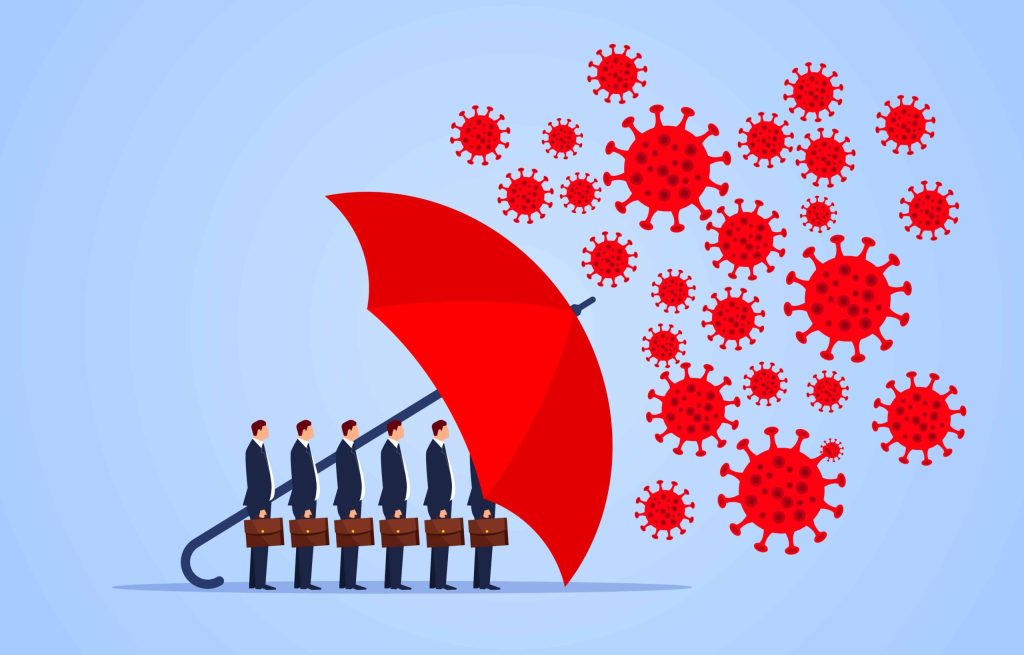Blog
Are You Prepared for a New Normal? | Blog

This is the fifth in a series of blogs that explores a range of topics related to these issues and will naturally evolve as events unfold and facts reveal themselves. The blogs are in no way intended to provide scientific or health expertise, but rather focus on the implications and options for service delivery organizations.
These insights are based on our ongoing interactions with organizations operating in impacted areas, our expertise in global service delivery, and our previous experience with clients facing challenges from the SARS, MERS, and Zika viruses, as well as other unique risk situations.
A month ago the equity markets were hitting all-time highs, but as I write this, the Dow Jones Industrial Average is down about 30%, largely due to the actions being taken to control the spread of COVID-19. Simply put, many enterprises are shutting down and pulling back – preserving cash, cancelling projects, delaying investments, and freezing hiring and/or laying off employees. We are truly living in unprecedented times.
However, through the confusion and panic, leading enterprises are demonstrating their preparedness in this difficult business environment, putting their leadership and digital business models on display. Amazon is pivoting quickly, responding to the crisis by not accepting new inventory to their warehouses other than medical and household staples, extending delivery hours and quickly hiring 100,000 additional employees to meet demand, while raising employee wages by $2/hour through April.
Other lessons from a less dominant company includes a Chinese cosmetics company, Lin Qingxuan, which was forced to close 40% of its stores in China (and 100% in Wuhan) during the peak of the crisis. The company quickly redeployed sales resources to their online presence to influence customers and drive online sales, resulting in 200% sales growth over prior year sales for the same period according to Harvard Business Review. In another example, luxury brand LVMH, which owns Louis Vuitton and Fendi, has repurposed its perfume manufacturing lines to make hand sanitizer, a move that may win the hearts of consumers as the crisis diminishes.
Clearly, this crisis demonstrates just how quickly consumer and business demands can change. If your business model is not designed to absorb these impacts, you most likely have been severely affected. Leading enterprises are already planning for the end of this crisis. China is seeing a dramatic decrease in the number of new COVID-19 cases, factories are reopening, workers are returning to their jobs, and companies such as Dow Inc. are actually seeing increasing demand for goods in China.
If you were one of the companies on the outside looking in, now is the time to act so that the next crisis does not catch you on your heels. To fortify your business model, start by doing the following:
- Review the alignment of your business strategy, business model, and core processes. The evolution of many enterprises focused on one area – such as client interactions – while overlooking other processes – such as such as manufacturing, supply chain, distribution, or accounting. The entire value chain must work in harmony when facing dramatic shifts in the business environment.
- Develop your perspective of the “new normal,” and quickly make adjustments. Do your customers still want to do business with you in the manner they did before the crisis, or will they expect a new normal? Do you really understand your customers’ buying behaviors? This crisis may have a significant impact on how you conduct business in the future as you learn new habits such as remote work, virtual collaboration, enhanced e-commerce, and improved visible business tracking.
- Understand what drives your value – outsource everything else to more capable providers. Dedicated outsourcing providers invest in their core business and strive to offer world-class services so that you can focus on your core value drivers. While outsourcing will drive cost efficiencies, you should expect it also to drive quality, flexibility, and agility of non-core processes that can better enable your business model.
- Review the alignment of strategic third parties to your business model. Many enterprises do not understand the value of a vendor management organization (VMO) until a strategic partner fails them. A VMO ensures alignment to the business model and selection of the right providers and suppliers to ensure they can move at the speed that your business model requires.
- Ensure your organization structure is aligned to your business model. To deploy as quickly and decisively as Amazon, Lin Qingxuan, and LVMH, you must have an organization that is innovative, empowered, aligned, and prepared. If your organization structures have not evolved as your customers have, you may want to review the reporting structures, spans and layers, and internal governance models to be certain you can address quickly changing business environments.
While this crisis has not yet peaked in many parts of the world, it is not too early to begin planning for a recovery and the new normal. Leading companies are monitoring the situation while also pushing forward with transformation and cost saving plans, incorporating changes with new learnings. This is not the first time we have been here, and it certainly will not be the last. Now is the time to not panic, but be bold and forge ahead.
Visit our COVID-19 resource center to access all our COVD-19 related insights.